At long last, our bees arrived last week! We’ve been looking forward to this for several months. When we started this process, I had no idea how complicated beekeeping would be. Actually, I knew practically nothing about it, which is why Gator and I decided we better take a class through the local beekeeping society. As we learned how complicated it is, we also learned how important it is. I knew that honeybees were on the decline, but I had no idea how fragile their existence is. The more we learned, the more we got excited about working to increase the bee population in our area.
So here we are. The bees arrive in wooden boxes, otherwise known as packages, each with 10,000 bees. Sounds like a lot, but they all fit in a package about the size of a shoebox. Included in each package is a queen in a cage with a couple of attendants (no joke!) as well as a can of sugar water with holes poked in the bottom for the rest of the bees to feed on until they get into their hive.
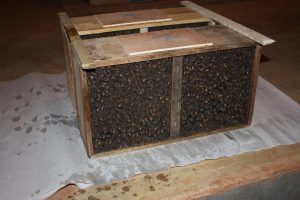
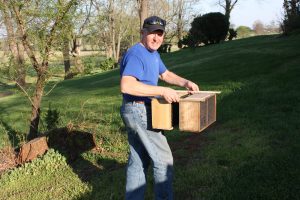
The bees come in packages of two and are shipped from Georgia. Our bee club orders them in November for April delivery, and they are delivered to a central location where we pick them up the day they are delivered. By the time the bees arrive, they are pretty unhappy. In two days, they are pulled out of their hives away from their queen and regular jobs, dumped into the package, put on a truck and shipped half way across the country. In order to calm them down, we put them in the cellar, which is cool and dark for a couple of days.
We are lucky enough to have a mentor through our club and when we were ready to install the bees in their hives, he came out to help us with the process.
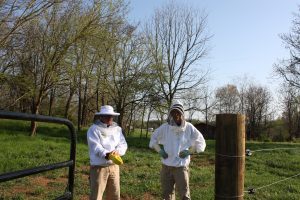
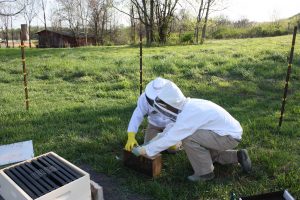
The first thing they did was to get the queen cage out of the package and hang it in the hive. The queen eats through a piece of candy from the inside and worker bees eat their way in over a few days, while they adjust to her scent and learn that she is their new queen.
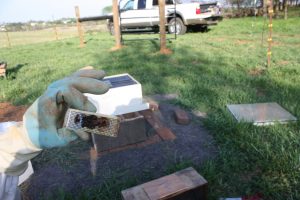
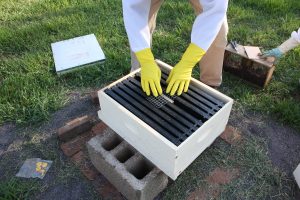
Once the queen was all set, then the rest of the bees go in. It’s called “shaking” the bees and that is exactly what happens. Gator did the honors. There are quite a few dead bees in the bottom of the package, but any that fall into the hive will be cleaned out as part of the regular housekeeping process.
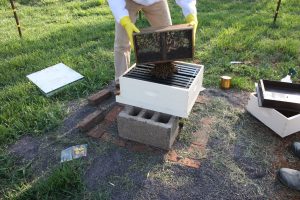
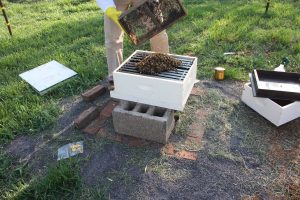
After letting the bees work their way down into the hive, the feeder full of sugar water goes on top and the lid goes on. Then it’s just a matter of checking on them every couple of days to make sure they have enough food. I didn’t realize we’d be feeding the bees, but this first year, they will need some help getting their numbers built up so that the hive will be strong enough to get through the winter.
Today we went out to check the hives and the queens have worked their way out of their cages! So far, things are going according to plan. Other than keeping food supplied, we will leave the hives alone for a couple more weeks. Then our mentor will come out and we will go into the hives to see if the queens are laying eggs. I’ll keep you posted!

Leave a Reply